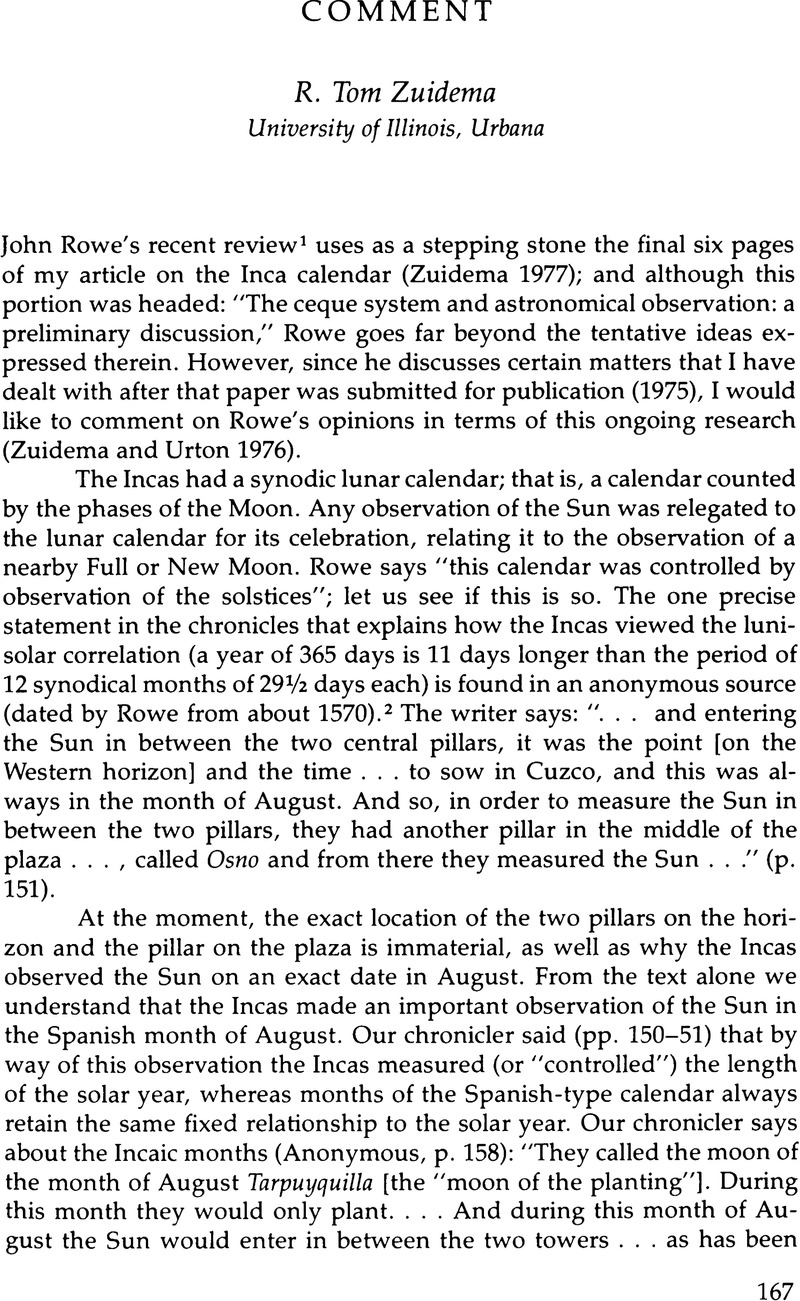Published online by Cambridge University Press: 24 October 2022

1. John Howland Rowe, “Archaeoastronomy in Mesoamerica and Peru,” LARR 14, no. 2 (1979):227–33.
2. For a line-by-line analysis of this information, see John Earls (1976).
3. On the map of Pukiura, hoja 27 r II S.E., scale of 1:25.000, Huarhuaylla is indicated as Arajay, with a latitude of 13° 16′30″ S and a longitude of 72° 01′30″ W. Having visited both hamlets, I can confirm that this identification is wrong. Arajay is somewhat further to the North on the same road to Chinchero. The hamlet Huarhuaylla belongs to the former hacienda of the same name, indicated as such on the map.
4. In the edition of Cobo that I used, he says that there are eleven huacas in this ceque, but only ten are enumerated. I reported this omission, which had not yet been observed by anyone else. As Cobo later says that he had forgotten to mention four other huacas, I suggested that one of these might be the missing one (Zuidema 1977, p. 242). One might cite as an example of scientific cooperation the fact that Rowe discovered the real missing huaca in an earlier edition of Cobo, thus solving a small problem. Instead, Rowe mentions my “gratuitous emendation,” but does not mention the missing huaca either (see his note 10).
5. Since antiquity, the astronomical beginning dates of the seasons were the solstices and equinoxes; this is opposed to the popular use of taking these dates as mid-season. Certainly, the well-educated Jesuit Cobo would know the scientific use of the term “verano.”
6. For an elaboration of the problem of the Osno, see Zuidema (ms). An earlier version of this paper was given in Cuzco at a congress attended by Rowe.